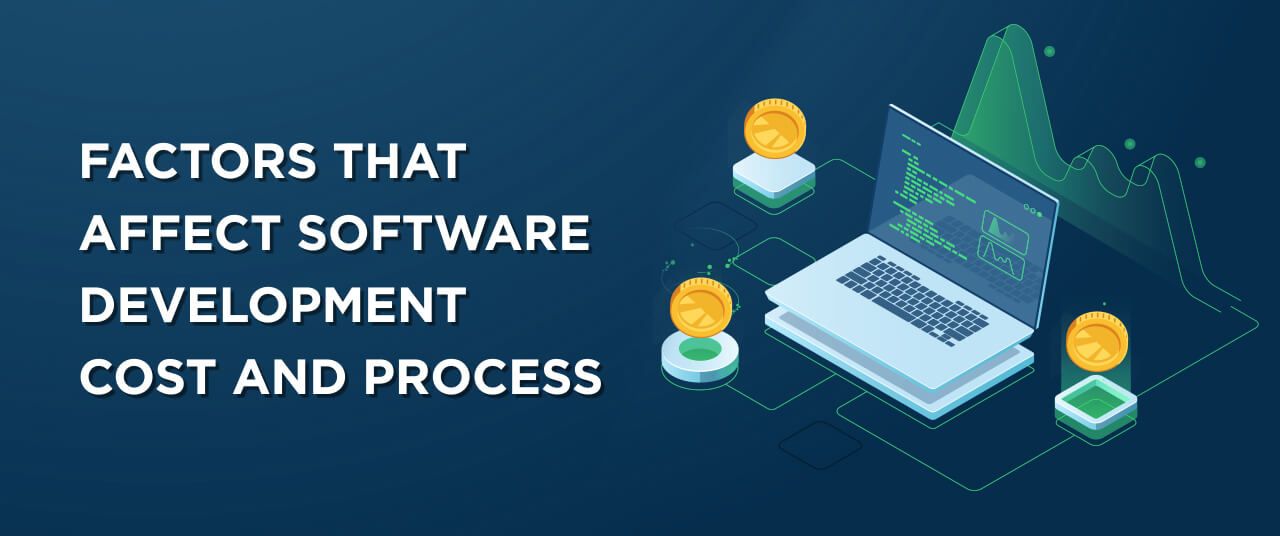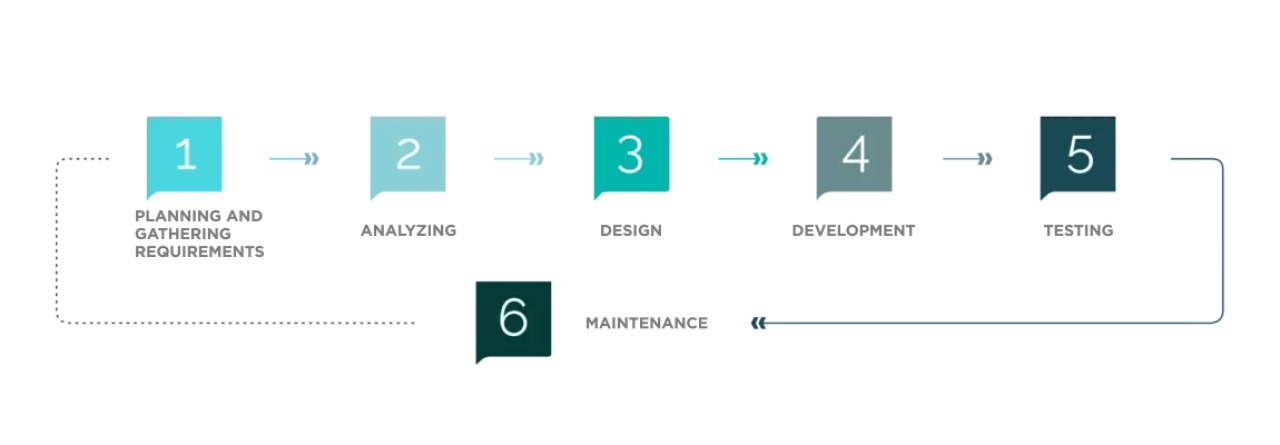Factors that Affect Software Development

Building custom software is a substantial decision for a business, as the prosperity and the outcome of the application highly depend on its performance.
In fact, before making a decision about developing a software product and choosing a custom software development company in USA, it is essential to clear up all nuances about the software development process.
Not everyone considers the risks related to poor user experience or persistent software bugs, but both lead to wasted money. To avoid these issues, it is crucial to understand the importance of the relationship between the development process and cost. Every project is unique, and understanding the key factors that affect software development process is vitally important for a business prosperity.
In this article, we will highlight and describe in detail the main factors affecting software development pricing and give an overview of the market situation in 2023.
By the end of the article, you will have a better understanding of the software development service and the development process. As a result, you will be informed of all possible challenges and will be able to estimate your potential project costs.
Here’s What We’ll Cover:
What Is the Software Development Process?
Every customised software development process, or life cycle, consists of various stages.

- Planning and gathering requirements. A client shares their idea, and the hired team comes up with a plan according to the client’s requirements.
- Analyzing. Stakeholders discuss the technical and user sides of the project. As a result, the team realizes the scope of work and gets a detailed description of each component.
- Design. Developers and architects design a template of a future product considering the client’s budget, time, suitable technologies they are going to use, front-end representation, and other factors.
- Development. Developers start coding based on the agreements from the previous steps. They create necessary components and features of the future product.
- Testing. Experts test the software’s performance, detect bugs and other possible glitches, and share the results with the development team.
- Implementation and deployment. The software is installed following the implementation plan. Depending on the project’s complexity, the release can be done immediately or in stages. After this stage, users finally get access to the app.
- Maintenance. This part includes regular updates. This is an important stage, as here, the app can be upgraded and polished according to real feedback from end-users.
Average Cost of Software Development
When searching “software development company near me” on the internet, there is no guarantee you will be satisfied with the results, especially if you are searching for a reasonable price. The average software development cost in a software services company depends on various aspects, including the type of application, its complexity, and even the location of the development team.
For example, experts from Romania may cost less than those from the UK. Additionally, the hourly wage of developers strongly depends on their level of expertise, whether they are junior, middle, or senior developers. This not only affects the hourly rate of each specialist but also the quality of the final product.
A less popular option is to hire developers at a fixed rate. This payment model makes it easier to estimate the budget and eliminates the need for the client to be involved in the process and control it after the plan is approved.
However, in this case, the project becomes less flexible as the client doesn’t pay for the actual work done. For instance, if an experienced developer completes a task in two days, the client would still pay for the whole week, making the fixed payment model unprofitable for the client.
The time to develop a software product for a software developer company can vary depending on the type and size of the project. Implementing minor modifications into existing software may take weeks and cost around $3,000. On the other hand, developing a new app of medium complexity from scratch may require an average of about 2+ months and cost up to $100,000.
Main Factors That Affect Software Development Cost
As mentioned before, app development pricing in a software services company varies according to different factors. Here are some highlights you need to consider while estimating a budget for new software:
- Platform type
- Project type
- Software size and complexity
- UI/UX design
- Integration with existing or external systems
- Development team
- Testing
We’re going to focus more on each factor to give you a better understanding.
Platform
The choice of the platform should depend on your business sector, the product’s type, and the required technologies. Even the target audience’s location plays a role here: in some countries, Android is more popular than iOS, and vice versa. Your choice of software development platforms will affect the software’s success and, obviously, the development cost.
Native Application (iOS/Android)
A mobile app running on one specific platform has its pros and cons. For instance, since a development team of a software developer company uses programming languages and tools that are made exclusively for iOS or Android, it almost guarantees a better performance and user experience. On the other hand, how do you select the right platform? One may rely on GlobalStats data saying that Android is used much more frequently than iOS. If you want to get two native applications for both platforms, the process might take more time and money, as you need to hire two different teams.
Cross-Platform Application
You only need one team to develop an application that works on both platforms. It is cheaper, less time-consuming, and helps you reach out to a larger audience. Although sometimes, these apps have compatibility issues and other bugs, so they need to be well-maintained. It is a less popular choice among specialists: according to Statista, roughly 30% of mobile developers work with cross-platform technologies rather than native tools.
Web Application
Web applications are easier and faster to develop, and that affects the price. They don’t need to be submitted to any app stores and can be updated automatically. The downside of web apps is that they are considered to be slower and less functional than mobile apps. However, today, there are progressive web applications that have some mobile app features. They run faster than standard web apps and can even work offline.
Type of Software Project
The category of the software project defines what kind of specialists you need to hire, as well as how much money and time it will take.
These are the main types of projects:
- New software development. It is about creating a custom product from scratch. Therefore, it’s the most expensive type and requires a significant budget.
- Existing software modification. This job is to apply necessary updates and other adjustments to improve old software.
- Software integration. It’s when you already have software that needs to be implemented into other processes. Microsoft Office is one of the examples of software integration.
- Web development. You hire developers to build a new web application or a website.
Software Size and Complexity
Price estimation would be impossible without understanding the scope of work. This factor depends on how big and complex the future software development service should be provided. Note that large projects are not always the most difficult ones.
Overall, there are four common project sizes:
- Small. It usually means that one needs to apply insignificant changes, such as fixing some bugs.
- Medium. It is often about creating a simple mobile app or a web interface. For example, a basic application can be built in 500 hours.
- Large. These projects, by default, require more expertise, time, and money. This can be the development of a multicomponent application that runs across various platforms and needs to be integrated into many systems. The job usually takes up to one year.
- Enterprise. The largest projects fall into this category. They may require serious security features, reliable databases, error handling, and scalability. The development process often includes integration into multiple systems. Sometimes, it takes more than one year to deliver a high-quality product of this type.
UI/UX Design
One shouldn’t underestimate the importance of visual components. The interface of your app is the first thing that users see. The impression they get will influence their decision to stay or leave; hence, your product’s success depends on it. Software design and architecture play crucial roles in delivering the best user experience. It is meant to satisfy users’ expectations and needs effortlessly. At the same time, UI/UX design helps to combine the aesthetic side with responsiveness, functionality, and usability.
Integration With Existing or External Systems
Software integration provides smooth communication between programs by unifying different subsystems and synchronizing their work. For example, it may be necessary while moving from a legacy system to an updated database system. Another case is to link different programs performing various tasks so they can work together and produce uniform results. Well-known examples of software integration are Microsoft Office and Google Suite.
Here are the most common integration types:
- Third-party software integration. This is when developers take an existing solution and implement it into your application. It saves both time and money. It is widely used by eCommerce, payment, and social network apps when one needs a multifunctional application that can process and analyze various data.
- Internet of Things (IoT) integration. This one helps the business to grow by analyzing the data collected by IoT devices. This integration type is useful for large organizations that need all their systems to work in tandem without losing any important information.
- Artificial intelligence (AI) integration. Integrating AI into the system means creating custom software features such as voice or face recognition.
- Application integration. Business uses it for various purposes — for instance, to build a sort of bridge between old on-premise and new cloud applications.
In VironIT, a custom software development company in USA, we have a wide experience of integration of different systems and platforms into the clients’ projects. Thus, we successfully integrated Shopify platform while building an exclusive e-commerce platform for a cosmetics shop.
Another example of excellent integration of 3 types of payment systems into an e-commerce and consulting platform & marketplace.
Development Team
The project’s complexity determines the kind of team you need. One wouldn’t hire a senior developer who charges an average of $45 per hour to create a basic app if this task can be done by a junior or middle-level specialist who charges $20-35.
Testing
The testing phase is one of the cornerstones for receiving the best product that meets all requirements and is bug-free. A series of tests can be performed manually or using automation tools. On average, a testing service costs around a quarter of the entire project’s price.
If you want to save some money and time, it is advised to test your product as often as possible. The earlier you find a bug, the easier it is to fix. Besides, even at this stage, outsourcing is a cost-effective solution in the long term. Independent testers from third-party custom software companies with the right set of skills can perform a better job from outside of the project.
Software Development Challenges in 2023
The software development process has undergone significant changes over the past three years. The COVID-19 pandemic, unstable global economic situation, and a slippery working environment have contributed to a quite risky situation in the IT professional market.
This fact seriously impacts on the client’s expectations of the software product.
Let’s discover top challenges that software development companies are facing.
Shortage of Qualified Developers
According to the Reveal report, one of the biggest challenges in 2023 is recruiting skilled developers who are strong in the platforms, programming languages, and transformative methodologies. This fact negatively impacts software products quality, as difficulties in competing and innovating lead to a lowering of demands for developers.
Inability to Master Innovations and Developer Tools
The appearance of new technologies, tools and programming languages enable a developer to grow as a professional.
Nevertheless, there may appear a problem: when a programmer implements innovation too soon, it might not meet his expectations and give an opposite effect, which may bring problems in the project.
On the other hand, ignoring new tools and technologies may leave a specialist behind the competitors.
Third-Party Integrations Difficulties
Third-party API integrations can make your software product more beneficial and engaging to users. Integrations can save time and money on in-house development, but it is essential to be sure that the API works as expected and will not break the existing functionalities of your product.
It is also important to determine if the integration will create vulnerabilities and expose the product and users to security threats.
Workload of Developers and Project Management
Since the time of COVID-19 pandemic, a great number of developers continue working remotely or in a hybrid environment.
In these conditions they face difficulties in managing workloads and projects. As a solution, digital workplace productivity tools can help overcome these challenges. The platforms provide distributed teams with tools to complete their tasks efficiently and effectively.
High Client Expectations
The success of the project is highly important for every client. Developers and product managers must ensure that they meet client expectations. According to the Reveal survey, 26.2% of respondents have trouble managing their workload, and 26% feel that client expectations are too high. In this high-pressure environment, developers need to find ways to get the work done while keeping clients satisfied.
Despite all the challenges the software development industry faces, step by step the solutions are found. Low code / no code tools are implemented to improve the productivity of developers and to reduce the talent shortage. Digital workplace platforms are helping hybrid and remote working developers to be connected and collaborate. New tools and innovations simplify the software development process.
Tips for Reducing Software Development Costs
When calculating a project’s price and selecting an outsourcing company, it is easy to make a mistake. Here are some tips to help you organize the process properly without overpaying:
- Create a technical specification.
- Develop essential functions.
- Hire experienced developers.
- Develop a Minimum Viable Product template.
- Use a back-end as a service solution.
- Take advantage of ready-made solutions.
- Use cross-platform development.
- Choose a software development company in US, with a rich portfolio and expertise.
- Test from the early stages.
Further relevant information may be found in this article.
Summary
It is impossible to predict the precise cost of software development. However, when you know all the factors and keystones that form the price, you shouldn’t encounter any difficulties or unpleasant surprises while estimating a budget.




